Forget complex, resource-hungry gadgetry, and soak up simplicity: earth-friendly mulches make greenhouse watering easy and guilt-free.
Gardening – especially any-weather greenhouse gardening – is a just-steps-away activity that offers us sanctuary from our increasingly busy-busy, rushed, technology-driven lives. Plants don’t go ever-faster to keep up with the latest app, or to improve their efficiency; they just grow, chasing sunshine, not a ‘work-life balance’. And they do it at nature’s steady, calming pace. Little wonder, then, that there’s a whole raft of stuff being written and spouted – often by hyper, deadline-driven journalists – about the soothing, therapeutic properties of doing gardening. Clearly, some of these folk would benefit from time immersed in a balmy June greenhouse – if only to find out what gardening is actually about.
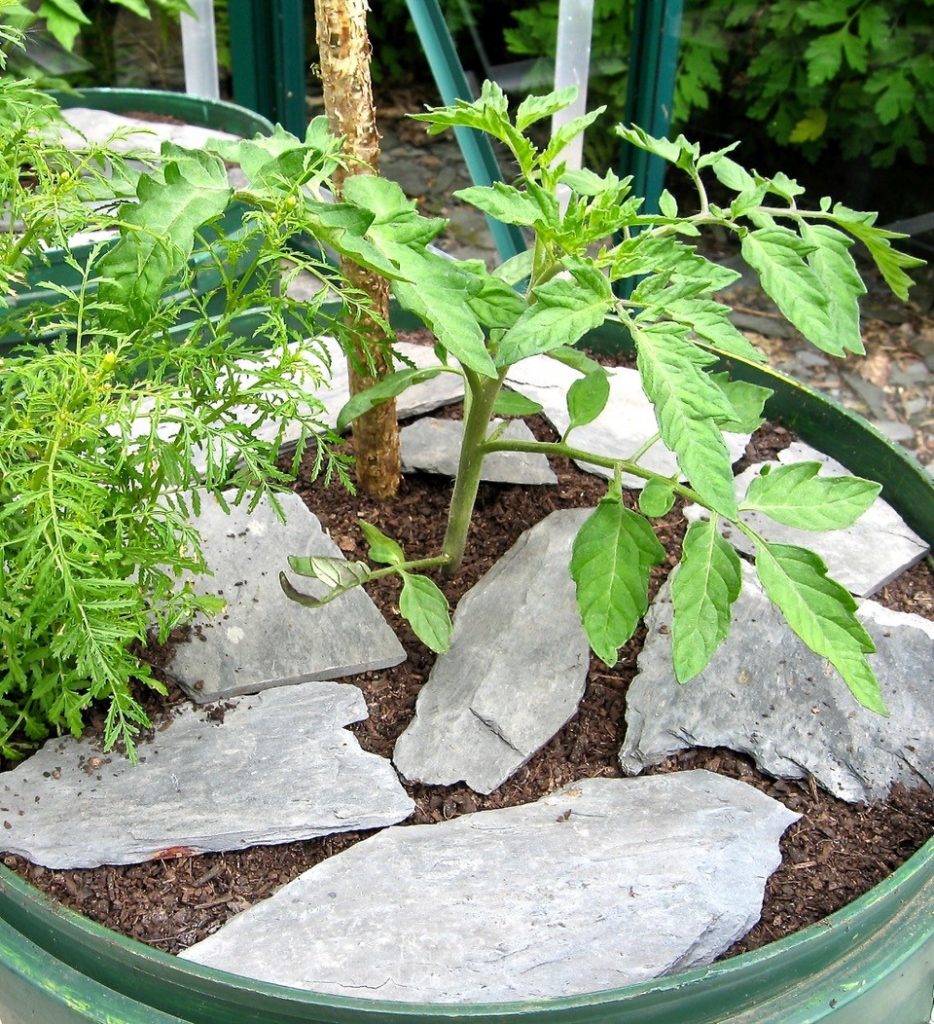
Likewise, we’re bombarded by businesses – forever circling our coveted gardening dosh – trying to tempt us with the latest gizmos designed to make gardening ‘easy’. After my lean-to greenhouse went up, I was – briefly – seduced by gadgetry promising to free me from effort so that I could ‘enjoy the garden!’. This related especially to watering; an online search unearths a seductive array of high-tech options, some of them involving pricey networks of rubber and plastic tubes and pipes that make the M6’s spaghetti junction look like a stroll in the park. Some of these gadgets are sensible and useful, but the rest have me frowning and asking myself, ‘Do I really need all this gubbins?’ A quality metal watering can, plus common sense, have steered me past many a temptation.
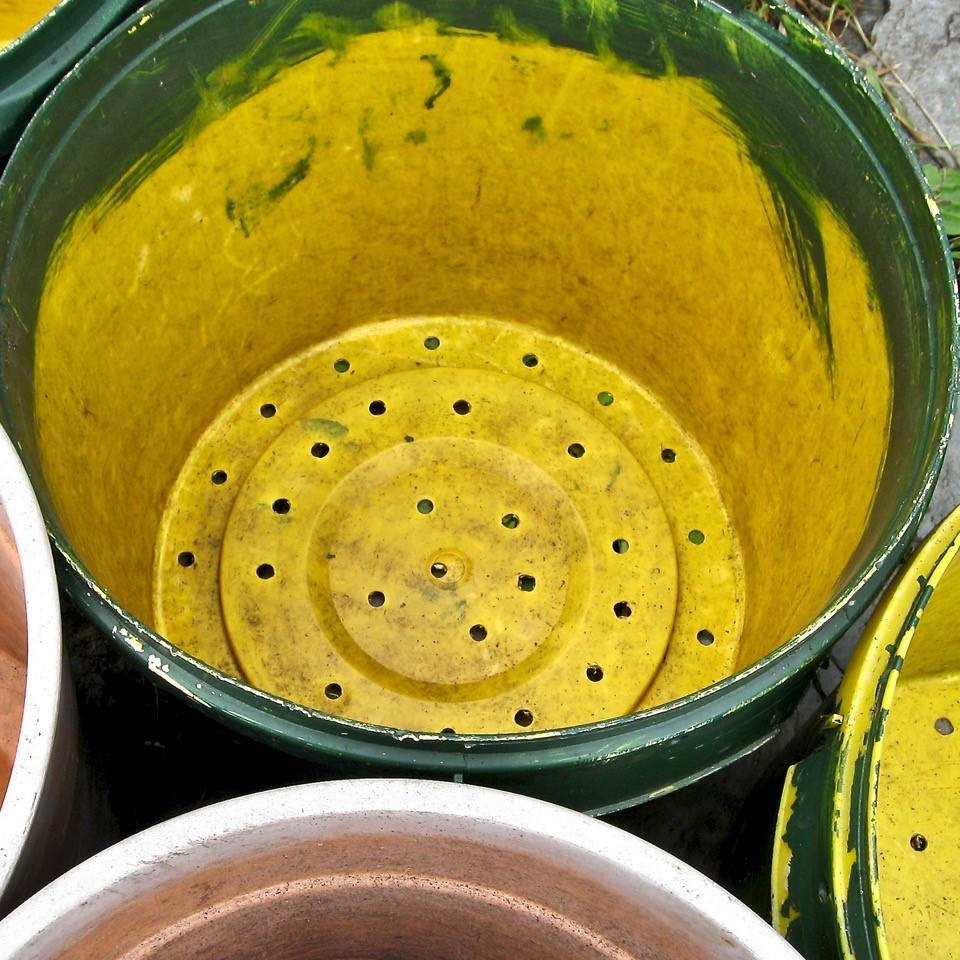
As we learn more each day about how human activity is pushing our life-supporting natural world to – and beyond – its limits, the question I ask myself first isn’t whether I actually need the gubbins, but what will eventually happen to it – especially if it involves copious amounts of plastic (which so much gardening stuff still does). So I’ve resisted high-tech fixes, evolving my own simple solutions along the way. One notable achievement has been the way I water my indoor tomatoes. I am still using some repurposed and recycled plastic, but other than that, my approach has earth-friendliness and renewability emblazoned all over it.
I grow my tomatoes in 30cm (12in) diameter repurposed sheep ‘mineral lick’ containers found littering local fields (and plucked from the river after a spate). They’re made of ‘hard’ plastic, and last several seasons before brittleness marks them as ready for recycling. I drill ample drainage holes in the bases (making sure to gather up all the drilled-out fragments), and give them a quick lick of eco-friendly green paint. I don’t add any drainage layer. They’re filled with either a quality peat-free compost, or my DIY mix, planted up with a tomato plant (and one single-flowered Tagetes to deter whitefly), and then stood in big recycled polypropylene trays. I’m already pondering what non-plastic options might work equally well, once the trays eventually crack (storing anything plastic in the dark when it’s not in use will lengthen its life).
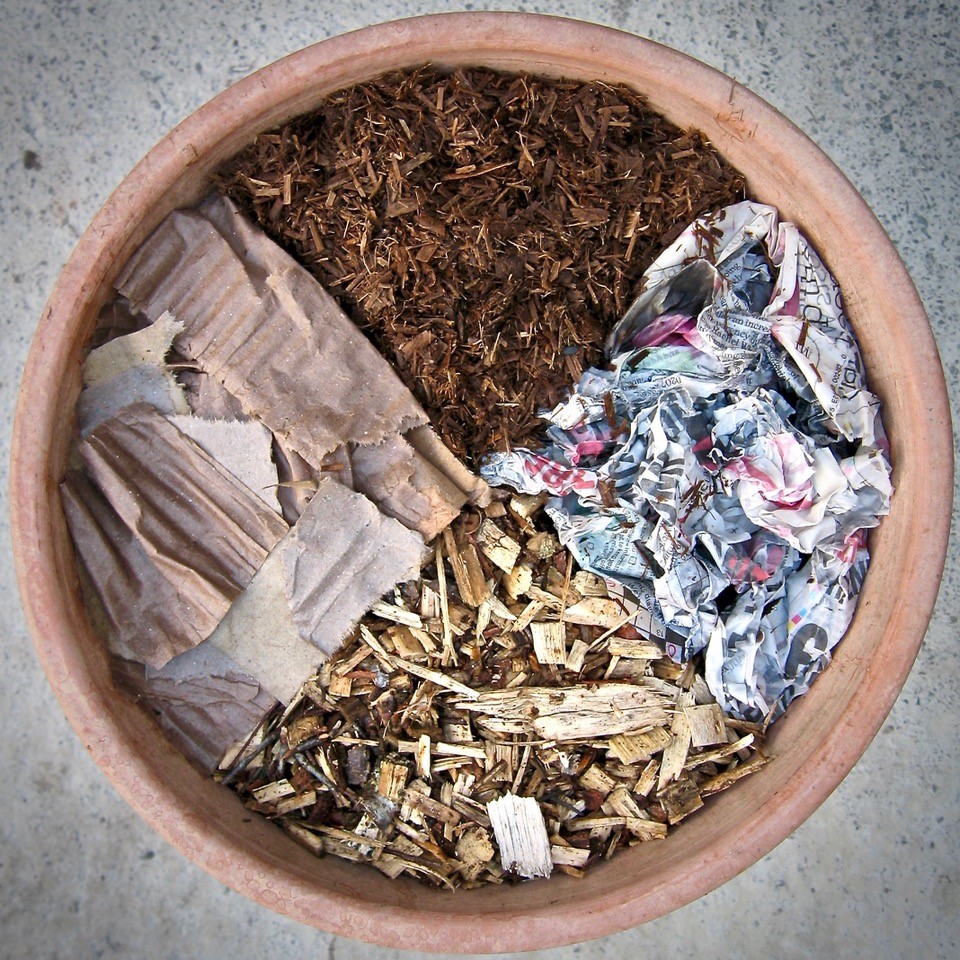
The first thorough watering is into the top of the pot, to settle everything in. Then I cover the compost surface with a ‘mulch’ of flat slate shards, snaffled from nearby quarry spoil heaps. These stop the compost from drying out and baking, reduce the need for watering, and encourage roots to grow throughout the compost. I don’t water again until the plants are visibly growing, and they show the first signs of wilting on a hot day. By then, I know their roots will have spread into the compost and need a drink – which involves nothing more than pouring water into the big trays until it just covers the tray’s surface. The drying compost in the pots, along with the tomatoes’ roots, sucks water up from the tray.
If I need to liquid-feed, I water over the shards into the top of the pot. If I’m away (and my neighbour’s keeping an eye on things), I put 2.5cm (1in) of water into the big trays, which will satisfy the plants for about a hot summer week – or longer if it’s a dull, cool spell. It means the plants can’t dry out completely, lessening the risk of the fruits being struck by blossom end rot. All my tomato-watcher need do is pour more water into the trays. There’s minimal gubbins, it’s simple, and it works. It also deters slugs and snails, which won’t cross open water.
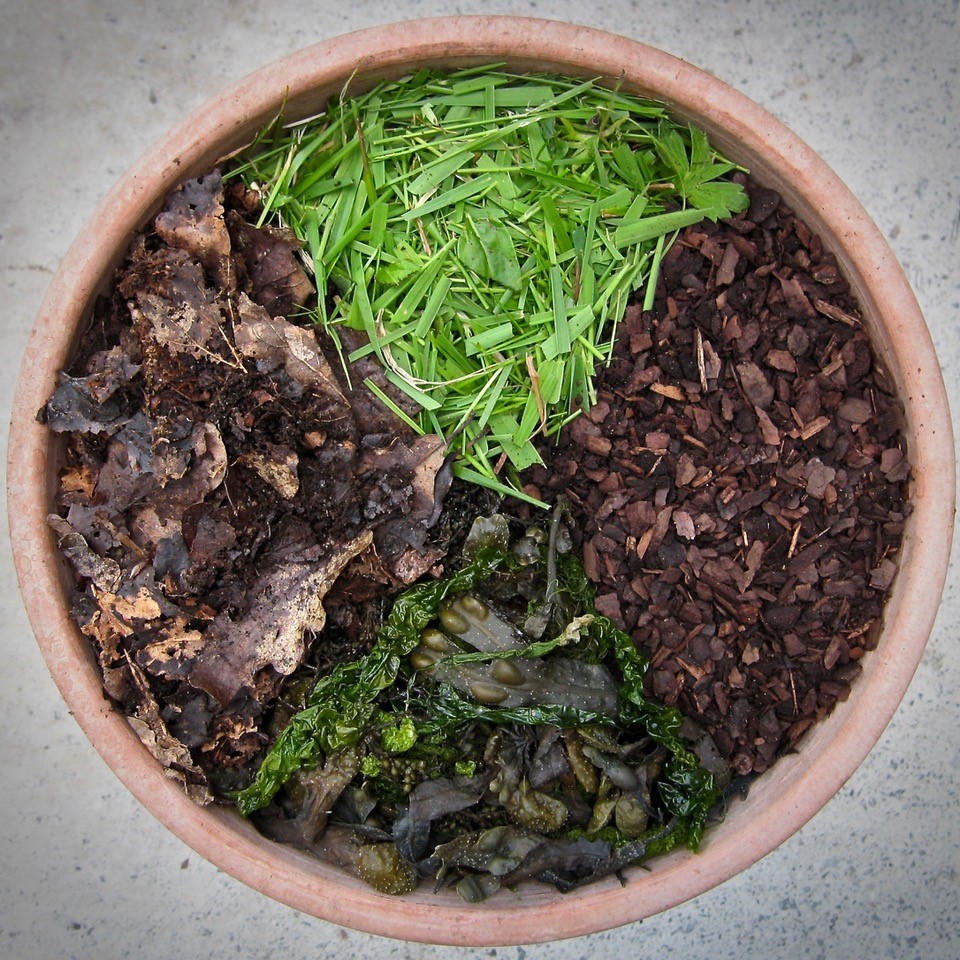
I’m fortunate to live in slate country (the skeleton of my garden is made from it), but slate shards are but one earth-friendly pot-topping mulch that’ll help you grow a top tomato crop. Lawn mowings do a fine job – just make sure they aren’t from a lawn treated with weedkiller. Wet full-thickness newspaper and cardboard can be torn to fit any diameter of pot, and held down with a few stones – or just use stones themselves, crammed together. A 2.5cm (1in) deep layer of fine bark, wood chips (abundant on roadsides), leaf mould, or freshly shredded prunings will all work equally well at sealing in moisture.
Handfuls of sheep’s wool gathered from barbed wire makes a pot-top mulch with added oomph: it’ll deter slugs, especially if it’s still fresh and oily. If you’re blessed to live near the coast, plastic litter-free seaweed laid over the compost works a treat (if you collect it when it’s dry and crispy, pass it through a shredder first). When you’re done, all but the infinitely reusable slate and stones can go straight into/onto your compost bin/heap. No micro-pollution of any sort – guaranteed.
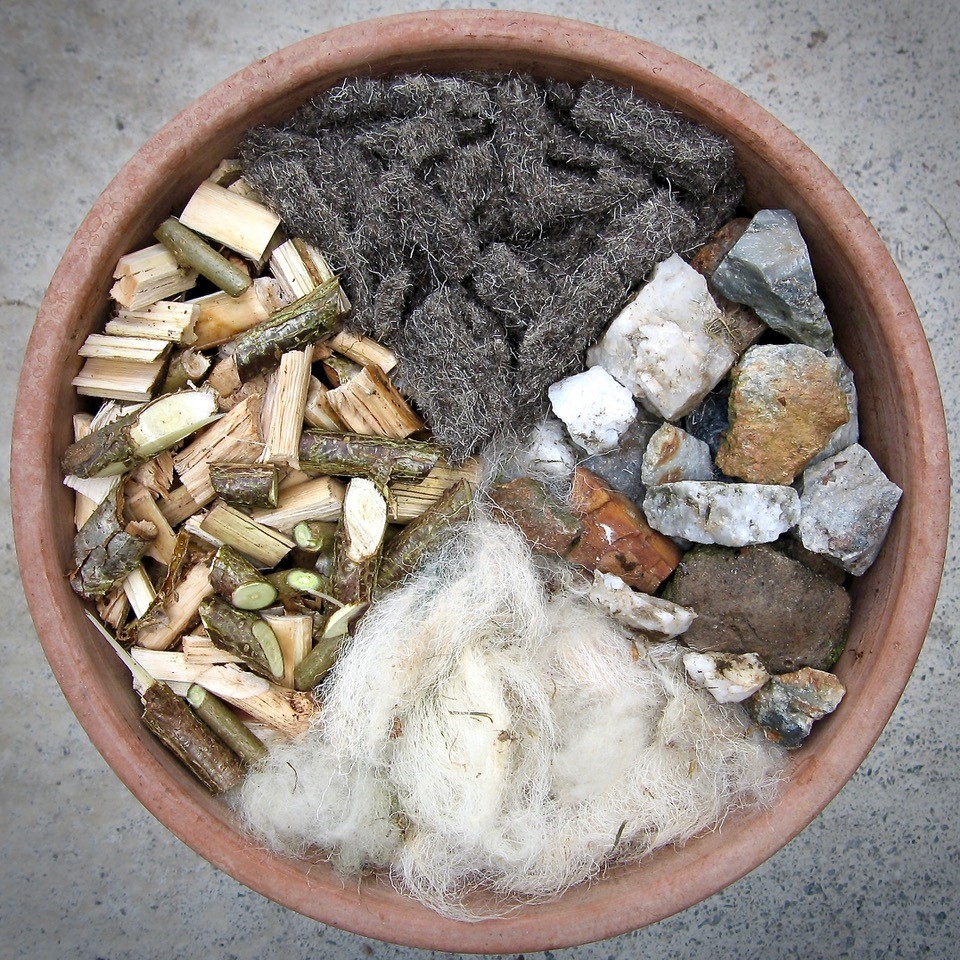
Two new, low-tech and supremely rottable pot-toppings have caught my eye. One is Bloomin Amazing’s crumbly ‘digestate’ from anaerobic digesters (which generate green and renewable biomethane gas). It’s sold as a soil conditioner and outdoor mulch, but it’s got greenhouse potential (not least as a promising component in home-made peat-free potting mixes). My slate shards don’t rot, but the lookalike ‘shillies’, from Chimney Sheep, do. These lightweight offcuts from their wool felt manufacturing (they make draught excluders for chimneys) also have the added advantage (like raw wool) of deterring slugs and snails. They look good, too.
So forget complex greenhouse gubbins, and think simple, straightforward, renewable and earth-friendly. Blessedly, there’s no app for that, but your tomatoes – and our living world – will be all the better for it.
Text and images © John Walker
Find John on Twitter @earthFgardener


